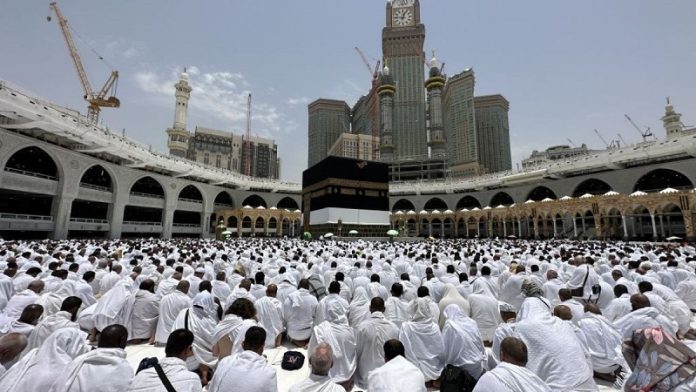The death toll from this year’s hajj has exceeded 1,000, due to the extreme heat in Saudi Arabia.
Around 10 countries have reported 1,081 deaths during the pilgrimage, one of the five pillars of Islam which all Muslims with the means must complete at least once.
The hajj, whose timing is determined by the lunar Islamic calendar, fell again this year during the oven-like Saudi summer.
The national meteorological centre reported a high of 51.8 degrees Celsius (125 Fahrenheit) this week at the Grand Mosque in Mecca.
A Saudi study published last month said temperatures in the area are rising 0.4 degrees Celsius each decade.
Each year, tens of thousands of pilgrims try to join the hajj through irregular channels as they cannot afford the often costly official permits.
Saudi authorities reported clearing hundreds of thousands of unregistered pilgrims from Mecca this month, but it appears many still participated in the main rites which began last Friday.
This group was more vulnerable, because without official permits they could not access air-conditioned spaces provided for the 1.8 million authorised pilgrims to cool down.
“People were tired after being chased by security forces before Arafat day. They were exhausted,” one Arab diplomat said on Thursday of Saturday’s day-long outdoor prayers that marked the hajj’s climax.
The diplomat said the main cause of death among Egyptian pilgrims was the heat, which triggered complications related to high blood pressure and other issues.
More fatalities were also confirmed on Thursday by Pakistan and Indonesia.
Out of around 150,000 pilgrims, Pakistan has so far recorded 58 deaths, a diplomat said.
“I think given the number of people, given the weather, this is just natural,” the diplomat said.
Indonesia, which had around 240,000 pilgrims, raised its death toll to 183, its religious affairs ministry said, compared with 313 deaths recorded last year.
Deaths have also been confirmed by Malaysia, India, Jordan, Iran, Senegal, Tunisia, Sudan and Iraq’s autonomous Kurdistan region. In many cases, authorities have not specified the cause.
Friends and relatives have been searching for missing pilgrims, scouring hospitals and pleading online for news, fearing the worst.
Two diplomats said Thursday that Saudi authorities had begun the burial process for dead pilgrims, cleaning the bodies and putting them in white burial cloth and taking them to be interred.
“The burial is done by the Saudi authorities. They have their own system so we just follow that,” said one diplomat, who said his country was working to notify loved ones as best it could.
The other diplomat said that given the number of fatalities it would be impossible to notify many families ahead of time, especially in Egypt which accounts for so many of the dead.
Jordan’s foreign ministry said on Thursday that Saudi authorities had granted 68 permits for Jordanian pilgrims to be buried in Mecca.
Sixteen Jordanians remain missing and 22 are in hospital, including seven who are in critical condition, the foreign ministry said in a statement.
Saudi Arabia has not provided information on fatalities, though it reported more than 2,700 cases of “heat exhaustion” on Sunday alone.
Last year, various countries reported more than 300 deaths during the hajj, mostly Indonesians.
The timing of the hajj moves back about 11 days each year in the Gregorian calendar, meaning that next year it will take place earlier in June, potentially in cooler conditions.
A 2019 study by the journal Geophysical Research Letters said because of climate change, heat stress for hajj pilgrims will exceed the “extreme danger threshold” from 2047 to 2052 and 2079 to 2086, “with increasing frequency and intensity as the century progresses”.
Hosting the hajj is a source of prestige for the Saudi royal family, and King Salman’s official title includes the words “Custodian of the Two Holy Mosques”, in Mecca and Medina.
The hajj has seen a number of disasters over the years, most recently in 2015 when a stampede during the “stoning the devil” ritual killed up to 2,300 people.


